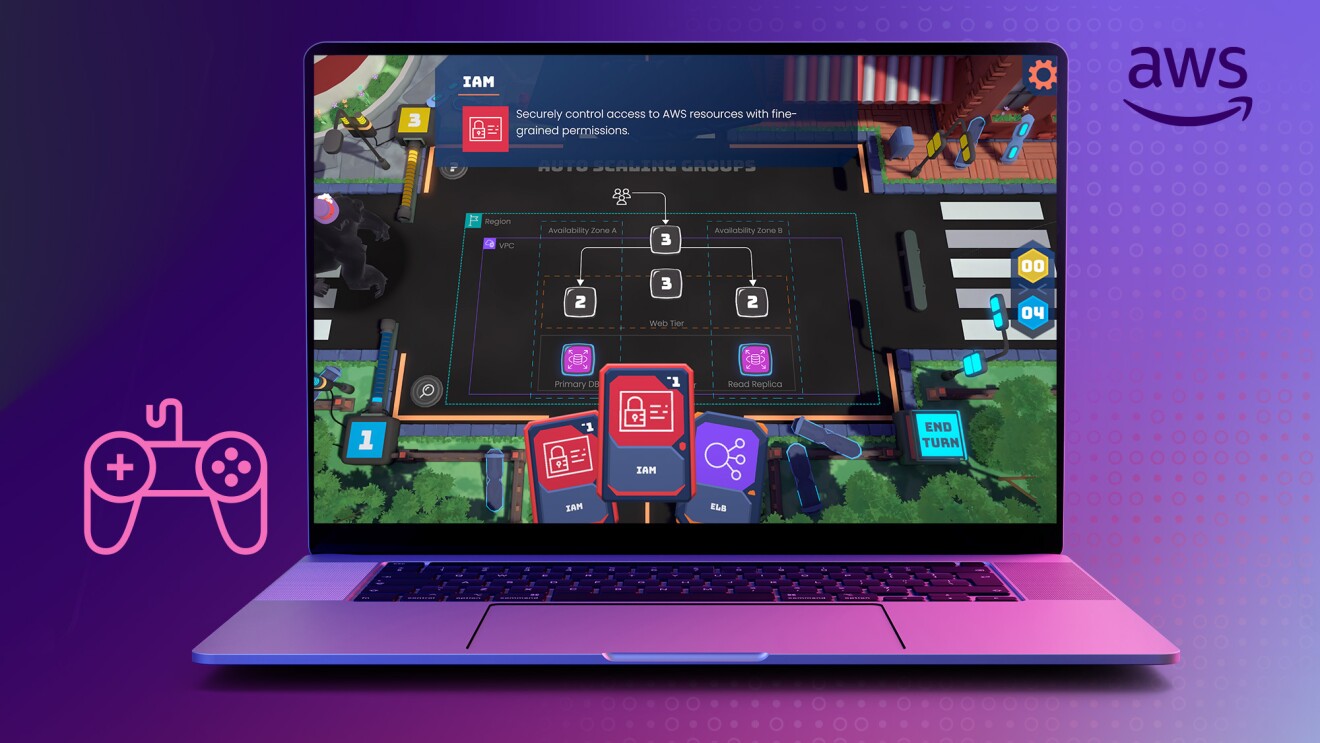It’s fourth down and inches. The clock is ticking. Pressure is mounting. Decisions must be made in a split second. Does the coach play it safe and kick the ball? Or risk it and go for it? Coaches rely on experience and gut instincts in the moment, but now fans can know what the optimal call is based on the numbers. The new Next Gen Stats powered by AWS called NGS Decision Guide answers the question, “What is a team’s win probability if they go for it, attempt a field goal, or punt?” Broadcasters can show fans the optimal call before the play happens or break down a coach’s decision making in a replay analysis.
The NGS Decision Guide was built on a series of machine learning models using Amazon SageMaker to power live fourth-down and 2-point conversion decision analytics. The decision equation focuses on two main components: win probability, which informs how much the game will change in the hypothetical event of each outcome, and conversion probability, which tells us the likelihood of the offense converting a fourth down or 2-point conversion.

In addition to the NGS Decision Guide, the NFL and AWS will debut the latest series of advanced stats for the upcoming 2021 NFL season, including Quarterback Expected Rushing Yards, Quarterback Dropback Type, Next Gen Stats Big Play Score, and Expected Fantasy Points. Since partnering with AWS in 2018, the Next Gen Stats team has made significant advancements in deriving predictive models from play-tracking technology. This season is no different. Following is a deeper look into additional new stats fans can expect to see this year.
Quarterback Expected Rushing Yards
In 2020, Expected Rushing Yards debuted, a metric based on the winning submission to the 2020 Big Data Bowl competition. The Expected Rushing Yards model estimates how many rushing yards a ball carrier will gain from the moment of handoff. The model produces a full probability distribution of outcomes in terms of yards gained, which also derives the likelihood the ball-carrier gains a first down or scores a touchdown. However, building the model around the handoff missed an ever-growing aspect of football—the quarterback run. This season debuts the Quarterback Expected Rushing Yards metric. The neural network modeling architecture built for handoffs was replicated and trained on quarterback run plays using Amazon SageMaker with the help of a new quarterback dropback classification model. For plays with a handoff, the relative speed, direction, and location of all 22 players is taken at the moment of the handoff. For plays without a handoff, the model uses a snapshot when the quarterback makes clear his intention to run. As it becomes more common to see quarterbacks making plays with their legs, fans can better quantify the impact these quarterback runs have on the game. Instead of being limited to basic max speed metrics to highlight breakaway scrambles, like Lamar Jackson's48-yard TD in the Ravens' Super Wild Card Weekend win last season, fans can see what makes Jackson so special.
Quarterback Dropback Type
The design of an offensive play is predicated on the immediate movement of the quarterback. Does the signal-caller take a straight drop? Does he roll out of the pocket? Is he forced to scramble? Is it a designed run? Next Gen Stats built a model to classify quarterback dropbacks in real time with the help of player-tracking data. By going deeper into the splits and using new quarterback dropback logic, the NFL can now more accurately classify a play call’s intended play type. A play where the quarterback drops back to pass, scrambles, and runs can now be credited as a “called pass play.” This distinction will allow for more robust analysis of run-pass play-calling tendencies.
Next Gen Stats Big Play Score
The top plays of an NFL game, week, or season are the plays worth watching again and again. By combining several Next Gen Stats machine learning models, the Next Gen Stats Big Play Score grades every play on a score from 0 to 100 based on three primary components:
- Win Probability Effect: Win Probability Effect is derived from the win probability model.
- Points Added: Points Added comes from the expected points model.
- Play Improbability: Play Improbability factor is a play-type specific, complex combination of completion probability, expected rushing yards, and expected receiving yards.
The top plays of the Next Gen Stats era (since 2016) based on the new Next Gen Stats Big Play Score:
NE at MIA (Week 14, 2018)
Qtr: 4, (:07) (shotgun) R.Tannehill pass short right to K.Stills to MIA 45 for 14 yards. Lateral to D.Parker to MIA 48 for 3 yards. Lateral to K.Drake for 52 yards, TOUCHDOWN.
Next Gen Stats Big Play Score: 99.8
NO at MIN (2017 NFC Divisional Rd)
Qtr: 4, (:10) (shotgun) C.Keenum pass deep right to S.Diggs for 61 yards, TOUCHDOWN.
Next Gen Stats Big Play Score: 99.7
BUF at ARI (Week 10, 2020)
Qtr: 4, (:11) (shotgun) K.Murray pass deep left to D.Hopkins for 43 yards, TOUCHDOWN.
Next Gen Stats Big Play Score: 98.5
Keep an eye out this season for analytically driven highlight reels of the biggest plays of the week, season, team, player, game, situation—the list goes on.
Expected Fantasy Points
Modern fandom can be driven just as much through one’s fantasy team as the allegiance to one’s favorite team. As such, the Next Gen Stats team is prioritizing fantasy football to deliver actionable insights and metrics to help fans win their league (or for some leagues, avoid the dreaded last-place “prize”). In fantasy football, opportunity is king. Historical snap counts, touches, and targets are used as proxies for a player’s involvement in the offense—more volume equals more fantasy points, according to many fantasy football fans. But not all opportunities carry the same weight in most fantasy scoring formats—a carry at midfield yields considerably less value than a rush attempt from the opponent’s goal line. Expected Fantasy Points and derivative stats like Fantasy Points Over Expected are two metrics fans can use to make in-season adjustments.
Once fantasy drafts are done and lineups are set, fans can look for the NGS Decision Guide and revamped Next Gen Stats powered by AWS on September 9, when the Dallas Cowboys take on the defending Super Bowl Champions, the Tampa Bay Buccaneers, at 5:20 p.m. (PDT) on NBC, Peacock, or the NBC Sports app.
Trending news and stories
- Amazon unveils 7 new robots powering faster, safer deliveries: Go inside our most innovative delivery station yet
- Introducing Vulcan: Amazon's first robot with a sense of touch
- This new AI tech will make sorting packages easier for Amazon's delivery station employees
- 15 photos from Project Kuiper's first launch of low Earth orbit satellites









